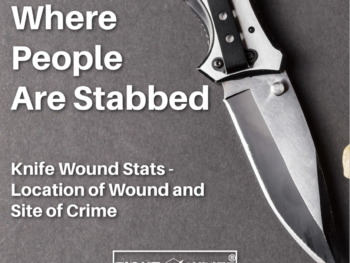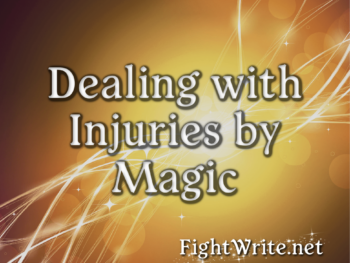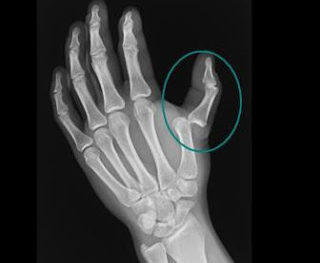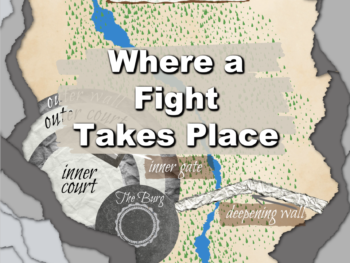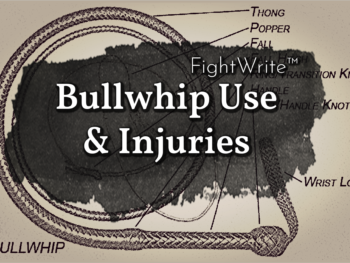
Our featured FightWriter this month is the wonderful Janeen Ippolito. She asks a bit about blood loss: How much blood does someone have to lose before it affects
their ability to fight? Does how fast or slow you’re bleeding out affect fighting ability significantly? Is making someone bleed an effective way of killing them? In movies you see people bleeding for three scenes and surviving and other times it knocks them out for the count.
Good question, Janeen. First, blood volume depends upon body size. So, injuries being equal, it would take a larger person longer to bleed to death than a smaller person for the simple fact that they have more blood. Because of that, they might be able to fight a bit longer. However, the amount of time they can stay on their feet depends not only on how much blood is lost but also how quickly.
Blood Loss Classifications
There are classifications of blood loss and each relates to percentage of loss rather than actual volume. With these descriptions, you can show symptomatically how much blood is lost without having to tell the blood volume. You can also see how fighting is affected.
Class I Hemorrhage – < 15% This is about how much we lose when we give blood. It can have few symptoms, though some people may feel faint. (I get faint.)
Class II – 15 – 30% The body will try to make up for the loss with a faster heartbeat. The person will feel weak, and the skin will pale, feel cool and mottle. Loss of consciousness can occur if from nothing else than the person seeing himself bleed so much. This isn’t a sign of wimpiness. The brain is telling the body, “you are in trouble, shut down!” The person may get a headache, feel nauseated, sweat profusely and become irritable, confused and combative.
Class III – 30- 40% The heart will race, blood pressure will drop (which will make you faint), smaller blood vessels will constrict to keep the body’s core circulation going. The victim will be very weak as the muscles will not have sufficient blood. They will have increased confusion, headache, and nausea. They will also pass out as the body tries to protect itself. Lips and fingernails will likely turn blue. On the plus side, the pain response will diminish.
Class IV – > 40% The body will go into a coma and then cease to function. The body will turn bluish gray.
Is It a Good Strategy?
Is causing blood loss an effective way to kill somebody? Um, yes. Super yes. Body function aside, one bleeding wound can open the body up for another. In Sayoc we learn strike patterns that work together to further exploit other vulnerable points. If I cut the left side of your neck, you will cover that wound with the left hand which opens the left side of the body, or you will cover the wound and lean your head to the left which opens the right side of your neck. If I then cut the right side you will have both hands up which will leave your gut vulnerable. If I cut your gut, you will put your hands down to catch your entrails which opens up your chest… It’s diabolical.
How it Changes Fight Strategy
Bleeding wounds can also change a person’s fight strategy. You will see fighters who have blood running on their face feel around for the wound to see if it’s their own blood. If it is, they know they need to protect something and that their vision may be impeded depending on the location of the wound. They may change their game to compensate for this which may not play to their strengths thereby making them weaker.
It also can have a huge psychological impact. It can scare people and some people get faint at the sight of it. And, as I mentioned earlier, that’s not a sign of weakness. Their body simply goes into protection mode quicker.
So, now, how long does it take to bleed out? It depends on the wound and, as I noted early, the size of the person. A knick to an artery can take as much thirty minutes, maybe a little more, provided the flow isn’t staunched. In Sayoc, we call this a “timer” strike meaning it’s only a matter of time before the person is out. If an artery is cut through, death can occur in under a minute. Even with modern medicine, it is difficult to compensate for that amount of blood lost that quickly. We call this type a strike a “switch” because the body “switches off” in under a minute.
However, it can also take days to bleed out. If your character’s ability to clot is compromised, they can slowly bleed out over time. Without the benefit of modern medicine and if the fluids can’t be compensated for (think medieval times), death taking days is plausible.
Does it Hurt?
Does bleeding out hurt? The actual blood loss, no. The wound that caused the bleeding and the internal pressure caused by internal bleeding, yes. You may get a headache but not necessarily. One of my dear friends nearly bled to death internally. She was lying in the hospital bed, completely gray, cracking jokes. At no point did she have a headache or feel pain. Your character may feel pain but only until they reach a level III hemorrhage. Then, the body’s pain receptors start shutting down.
I hope this answered your question, Janeen. Oh, also, a little blood can look like a whole lot of blood! Spill a tablespoon of water on your counter. It looks like far more than you’d imagine!
Until the next time at FightWrite.net, get blood on your pages!
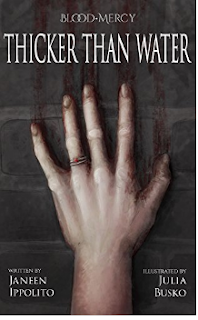 Janeen’s book, Thicker Than Water, is available now on Amazon. Choose the picture for a link. She is also the president of Uncommon Universes Press, a spec fic publishing house that focuses on world-building, complex characters, and stories of good and evil.
Janeen’s book, Thicker Than Water, is available now on Amazon. Choose the picture for a link. She is also the president of Uncommon Universes Press, a spec fic publishing house that focuses on world-building, complex characters, and stories of good and evil.


